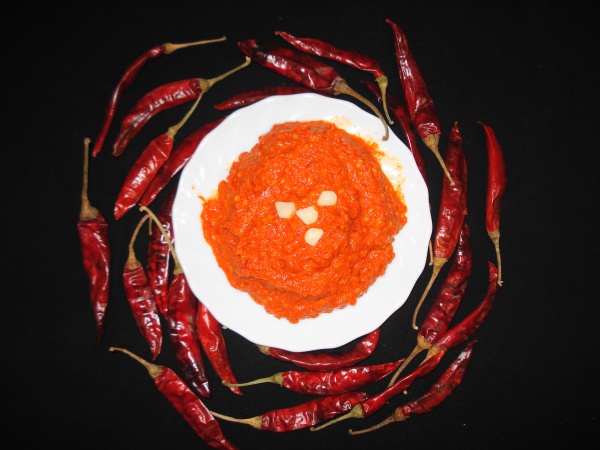Facts About Harissa
Harissa is a spicy chili pepper paste originating from Tunisia. It is crafted from roasted red peppers combined with either Baklouti or serrano peppers, and blended with spices and herbs like garlic paste, caraway seeds, coriander seeds, cumin, and olive oil. A unique variant is rose harissa, which incorporates rose petals for an added floral dimension.
The chili peppers integral to harissa likely entered Maghrebian cuisine during the Spanish occupation of Tunisia between 1535 and 1574. Today, harissa is a cornerstone of Tunisian cooking, imparting heat and flavor to dishes such as stews, couscous, and lablabi (a chickpea soup). Tunisia remains a major producer of harissa, with variations in spice levels depending on the region where the peppers are cultivated.
In Algeria, harissa is a popular addition to soups, stews, and couscous, and is also used as a marinade for meats and eggplants. The Annaba Province in Algeria is particularly renowned for its harissa production and consumption. In Morocco, harissa is commonly served as a side condiment for tagines.
Tunisian harissa extends its popularity beyond local borders and is a significant export. In Israel, it is a favored topping for dishes such as sabich and shawarma and is often enjoyed alongside other spicy sauces like sahawiq and amba.
There is also a Libyan Jewish version of chili sauce known as filfel chuma, or pilpelshuma. Similar to harissa, this sauce is made with powdered sweet and hot peppers, crushed garlic, caraway seeds, cumin, lemon juice, and salt. Filfel chuma is highly versatile, used as both a condiment and an ingredient in various dishes including salads, meats, fish, legumes, rice, and egg dishes like shakshouka.

 Algeria
Algeria